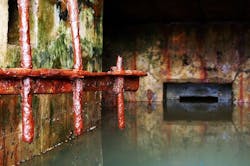Kentucky Water Agency Meeting Sewer Plan
In Kentucky, the Regional Water Resource Agency (RWRA) is ahead of schedule in its 10 year combined sewer overflow long term control plan, according to the Messenger-Inquirer.
The RWRA is working toward complying with the U.S. EPA's Clean Water Act to stem the impact of untreated or partially treated human and industrial waste, toxic materials and debris, as well as storm water on the Ohio River, Dean Behnke, RWRA director of engineering, said.
"I think their (EPA) overall goal is to eliminate those combined systems," Behnke said to the Messenger-Inquirer. "However, they know for some communities that isn't realistic, so their prerogative is to clean up the waters as much as they can. The next wave of regulations is stormwater runoff, which is bacteria-laden. Overall, the main thrust isn't to separate, but to lower the impact of bacteria impact on the river."
According to the Inquirer, a combined sewer system (CSS) collects rainwater runoff, domestic sewage and industrial wastewater into one pipe. Under normal conditions, it transports all of the wastewater it collects to a plant for treatment, then discharges to a water body, barring extreme instances of flood or massive snow melt.
To meet the EPA's combined sewer overflow policy, RWRA has taken on a 10 year-16 step, $30.2 million plan to take the ecological weight off of the Ohio River, he said.
"We should not have any problem meeting our 10-year deadline," Behnke said to the Inquirer. "We think we are ahead of schedule in year three, with the money spent it is more like year four or five. We have some projects that are in the last five years of the project and are doing a review on where we are at in terms of meeting the goals and what we are getting out of the projects."
According to the Inquirer, the plan was formally approved by the EPA and the state of Kentucky in May 2016, and includes projects such as green infrastructure initiatives, installing ultraviolet disinfection units at the east and west treatment plants, installing storm water and wastewater separators, and lining and repairing pipes throughout the system.
